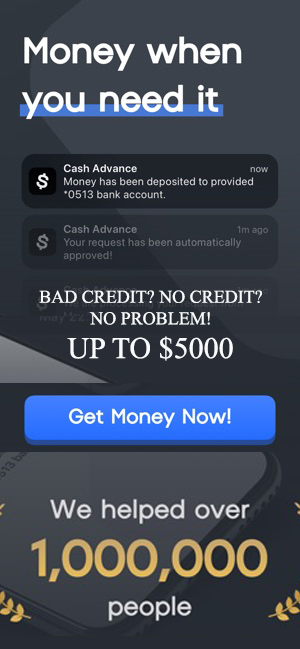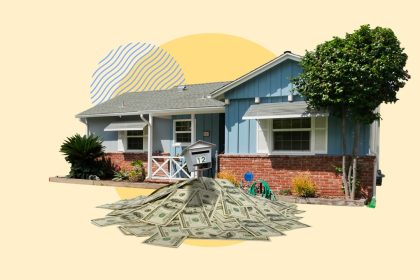Key takeaways
- CDs work best for money you won’t need for at least six months, offering guaranteed returns with fixed interest rates
- Online banks and credit unions typically offer the highest CD rates, often 2-3 percentage points above national averages.
- CD laddering and barbell strategies help maximize returns while maintaining some liquidity during rate changes.
- Always verify FDIC or NCUA insurance coverage and compare early withdrawal penalties before opening any CD.
A certificate of deposit (CD) locks up your money for a set period — anywhere from three months to five years — in exchange for a guaranteed return. It’s more restrictive than a savings account, but the payoff can be worth it. Some short-term CDs are currently paying rates around 4.50%.
The trick is knowing how to buy a CD smartly. The right CD strategy depends on when you’ll need your money, what rates are available and how much risk you’re comfortable with. Whether you’re saving for a house down payment or just want a safe place to park some cash, these 18 tips will help you get the most from your CDs.
1. Figure out why you’re saving the money
Don’t just throw money into a CD because the rate looks good. Ask yourself: What’s this money for, and when will I need it?
CDs work best when you have a specific goal with a clear timeline. Planning a wedding in 18 months? A CD makes sense. Need money for a potential emergency? Stick with a high-yield savings account instead.
If you might need the cash within six months, avoid CDs entirely. The early withdrawal penalties will eat into any gains you might make.
For long-term growth beyond five years, you’re probably better off with stocks or mutual funds. Check out Bankrate’s investment guides to explore those options.
2. Keep your emergency fund separate
You probably don’t want to put your entire emergency fund in a CD. You need that money to be available immediately, not locked away for months or years.
Make sure you have three to six months of expenses sitting in an easily accessible account first. Think high-yield savings or money market accounts — places where you can grab your money without penalties.
Only after you’ve built that safety net should you consider CDs for other goals. CDs are great for money you know you won’t need for a while, like:
- Funds for a planned vacation next year
- Money you’re setting aside for a car purchase
- Cash you want to earn more on but don’t need immediately
3. Shop around (seriously)
Your bank’s CD rate probably isn’t the best you can get. The national average for 12-month CDs is around 2 percent — which barely keeps up with inflation. But some banks are paying much more.
Start with online banks. They consistently offer the highest CD rates because they don’t have expensive branch networks to maintain. You might find rates 2-3 percentage points higher than what traditional banks offer.
Credit unions are another good bet. Since they’re nonprofits, they often pass savings on to members through better rates.
Don’t just look at rates, though. Compare:
- Minimum deposit requirements
- Early withdrawal penalties
- Available terms
- Customer service quality
Use Bankrate’s CD rate comparison to see what’s actually available before settling.
4. Make sure your money is protected
This should be obvious, but only open CDs at insured banks or credit unions. If the institution fails, you want your money back.
Look for FDIC insurance at banks or NCUA insurance at credit unions. Both protect up to $250,000 per depositor, per institution. You can verify coverage at FDIC.gov.
Don’t chase a slightly higher rate at an uninsured institution. It’s not worth the risk. Stick with properly insured places and check out Bankrate’s guide to FDIC insurance if you need to spread larger amounts across multiple banks.
5. Pay attention to where rates are headed
Timing matters with CDs. If rates are high and expected to drop, lock in a longer-term CD now. If rates are low and rising, keep your terms short so you can reinvest at higher rates later.
Right now, CD rates are near multi-year highs, but the Federal Reserve is expected to cut rates soon. That makes longer-term CDs more attractive — you can lock in today’s good rates before they disappear.
Check Bankrate’s rate forecasts to see where experts think rates are heading. It can help you decide between a 1-year CD and a 5-year CD.
6. Start with online banks for maximum yields
Online banks consistently offer the highest CD rates because they operate with lower costs than traditional brick-and-mortar institutions. These savings get passed to customers through better yields and fewer fees.
Top online banks often provide CD rates 2-4 times higher than national averages. While you’ll sacrifice in-person service, most online banks offer excellent customer support through phone, chat and email.
Compare Bankrate’s best online banks to find institutions offering both competitive CD rates and solid customer service. Many also provide user-friendly mobile apps for better account management.
7. Explore community banks and credit unions
Don’t overlook smaller, local institutions when rate shopping. Community banks and credit unions sometimes offer promotional CD rates or bonuses for new customers, especially for larger deposits.
Local institutions may also provide more flexible CD options, such as add-on CDs allowing additional deposits throughout the term. These features can be valuable for ongoing savings strategies.
Check Bankrate’s list of best credit unions to find local institutions with competitive CD offerings.
8. Don’t let your CD auto-renew at a bad rate
When your CD matures, most banks give you about a week to decide what to do. If you don’t act, they’ll automatically roll your money into a new CD at whatever rate they’re offering that day — which could be much lower than what you originally got.
Set a calendar reminder for about a month before your CD matures. Use that time to shop around for better rates. You might find that Bankrate’s current CD rates beat what your bank is offering for renewal.
Don’t just sleepwalk into a renewal. Those promotional rates you got initially? They’re probably long gone. Here’s our guide on what to do when your CD matures.
9. Match CD terms to your timeline
Selecting the right CD term prevents early withdrawal penalties while maximizing returns. Popular CD terms include:
- 3 to 6 months: Emergency fund supplements or very short-term goals
- 1 year: House down payments, vacation funds or other annual goals
- 2- to years: Car purchases, wedding expenses or medium-term savings
- 5 years: Long-term savings requiring principal protection
Use Bankrate’s CD calculator to project earnings across different terms and rates before committing.
10. Review minimum deposit requirements
CD minimum deposits vary widely among institutions. Some require $1,000 or more, while others accept any amount. However, higher deposit tiers often unlock better rates.
Start with banks offering competitive rates at your deposit level. You can consider splitting large amounts across multiple banks for FDIC coverage, or look for relationship bonuses if you’re already a customer.
Don’t let high minimums prevent you from getting competitive rates. Many institutions on Bankrate’s best CD list offer excellent rates with no minimum requirements.
11. Know what the early withdrawal penalty will cost you
CD penalties vary wildly between banks, and they can be brutal. Some charge 90 days of interest for early withdrawal from a 1-year CD. Others might hit you with 6 months of interest or more. If you withdraw early from a brand-new CD, you might get back less than you put in. The penalty could eat into your principal.
Always ask about penalties before opening a CD. And never open one unless you’re confident you won’t need the money before it matures.
12. Consider short-term CDs strategically
When short-term CD rates approach longer-term yields, shorter durations often make more sense. This preserves flexibility while still earning competitive returns.
Short-term CDs work well when rate environments are uncertain or short and long-term rates are similar. They’re also a good idea if you prefer maintaining more liquidity or are building a CD ladder.
13. Try CD laddering to hedge your bets
CD laddering sounds complicated, but it’s actually pretty simple. Instead of putting all your money in one CD, you split it across several CDs with different maturity dates.
Say you have $10,000. Instead of putting it all in a 5-year CD, you might put $2,000 each into 1-, 2-, 3-, 4-, and 5-year CDs. When the 1-year CD matures, you reinvest that money in a new 5-year CD. The next year, your 2-year CD matures, and you do the same thing. This way, you get some of the benefits of longer-term rates, but you’re not completely locked in. Plus, you get regular opportunities to reinvest if rates go up.
Check out Bankrate’s CD ladder guide for more detailed strategies.
14. Explore barbell strategies
A CD barbell strategy combines short-term liquidity with long-term yield maximization by avoiding medium-term CDs. This approach works when the yield curve is flat or inverted.
Let’s go back to that $10,000 example. Using the barbell strategy, you could put 50% of your money in short-term, 6-month CDs and the other 50% in long-term, 5-year CDs, leaving out the “middle”. This strategy provides both immediate access to funds and maximum long-term yields.
15. Look into indexed and structured CDs
Indexed CDs link returns to market performance while protecting principal, offering potential upside beyond traditional CD rates. These products typically cap returns at a percentage of the underlying index performance.
For example, an S&P 500-linked CD might pay 75% of the index’s annual gain, with principal protection if markets decline. Structured CDs add complexity but may appeal to intermediate-term savers seeking market exposure with downside protection.
16. Evaluate step-rate CDs and bump-up CDs
Step-up CDs feature predetermined rate increases during the term, while bump-up CDs allow you to request rate increases if market rates rise.
- Step-up CDs: Rates increase automatically on scheduled dates, regardless of market conditions. Compare the blended APY across the entire term to traditional fixed-rate CDs.
- Bump-up CDs: Typically allow one rate increase request during the term, but current market conditions make this feature less valuable since rates are expected to decline.
Read the fine print carefully, as some banks use these terms interchangeably. Focus on step-up CDs in the current environment where automatic increases provide more certainty.
17. Consider brokered CDs for higher yields
Brokered CDs are purchased through a brokerage firm and are an option for those looking for higher rates than those offered at banks on regular CDs. Brokered CDs also allow investors with more than $250,000 to insure all of their funds with the FDIC by offering CDs issued by multiple banks. Just make sure you know what bank a brokered CD is at so you don’t exceed FDIC limits with other accounts you may have at the bank.
Terminating a brokered CD early is more complicated than with a traditional CD because you may have to sell your ownership interest, via your broker, at the current market value. Depending on the rate environment, terminating your investment early could cause you to lose some of your principal.
Brokered CDs are a riskier option than bank CDs because you may lose some principal or have to sell for a loss if rates increase after you open a brokered CD.
18. Consider no-penalty CDs
Regular CDs lock up your money completely. But some banks offer “no-penalty” CDs that let you withdraw your money early without fees, usually after the first week or so. The catch? The interest rates are typically lower than regular CDs. But if you’re not 100% sure you won’t need the money, a no-penalty CD gives you more flexibility.
Compare no-penalty CD rates with high-yield savings accounts to see if the rate difference is worth it. Sometimes a good savings account is the better choice.
Bottom line
CDs aren’t the most exciting, but they’re reliable. They work best when you know exactly when you’ll need your money and want guaranteed returns without market risk. The key is matching the CD term to your timeline and shopping around for the best rates. Don’t just grab the first CD you see—rates vary dramatically between banks.
Think of CDs as one piece of your overall financial picture. Keep your emergency fund in savings, use CDs for medium-term goals, and consider other investments for long-term growth.
Ready to get started? Shop top CD rates:
Why we ask for feedback
Your feedback helps us improve our content and services. It takes less than a minute to
complete.
Your responses are anonymous and will only be used for improving our website.
Help us improve our content
Read the full article here
















